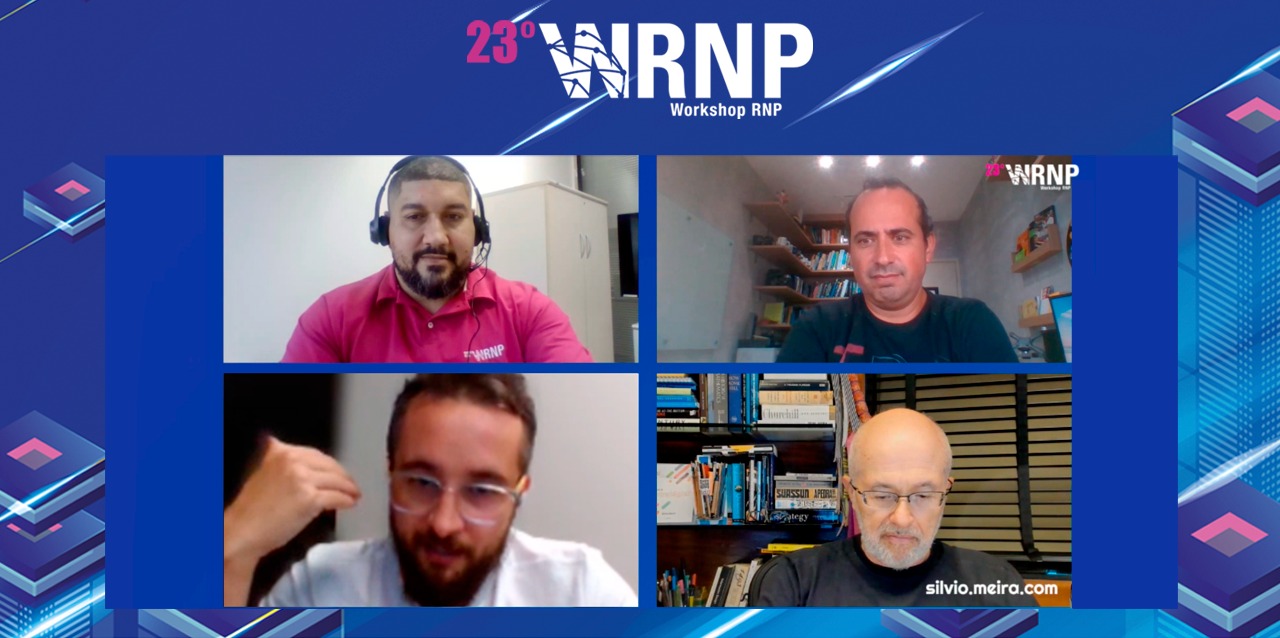Silvio Meira: ‘Metaverse does not exist yet and we are far from it’
The evolution of technology generates new experiences. This was the case with the migration from cassette tapes to CDs; with the arrival of on-demand content; and with the metaverse, which does not yet exist, but promises to unite, in the same dimension, virtual and physical realities. Currently in vogue, the topic was discussed in the panel “Towards the Metaverse: Definitions and Opportunities”, on the first day of the 23rd RNP Workshop.
The meeting was led by Felipe Nascimento, innovation analyst and leader of the Study Group on the Metaverse at RNP, and included lectures by Silvio Meira, chief scientist at TDS.company and extraordinary professor at CESAR.school; Thiago Savoldi, manager of Growth, Innovation and Business Strategy at Restoque S/A; and Esteban Clua, general coordinator of UFF Medialab.
For Meira, “the metaverse does not yet exist and we are far from it”. In his definition, the metaverse will be “phygital”, that is, a combination of the physical, digital and social world. “There are three axes: the user's impression, where one goes from the concrete to the abstract; a dimension of world knowledge; and that of coherence between real and virtual space. The combination of these three dimensions simultaneously generates an illusion of place, it expresses itself in its greatest capacity, combined with the awareness of the world and the illusion of plausibility of this virtual world where we would be”, he said.
In Esteban Clua's view, the metaverse will happen. He based his vision on three premises: the way of interacting with the digital world progresses and is revolutionized from time to time; people are already familiar with expressions of the metaverse, through digital games and simulators; and the metaverses are necessary. One of the examples of the usefulness of metaverses for society, cited by Clua, is the modernization of periscopes – optical instruments used on submarines to observe the outside world – with the use of virtual reality helmets.
“The metaverses are things that we already know and deal with, but right now we are trying to bring them together, to integrate them. In fact, it still doesn't exist. What I see for the future is the challenge of creating an integration for the entire landscape of digital worlds. For example, having a tool that is capable of putting us in a single metaverse environment where we can interact with multiple scenarios”, he said.
Thiago Savoldi understands that augmented reality is not simply a filter, as is often imagined, but a way of creating worlds and including elements in an existing space. He talked about the use of the metaverse in virtual games and the adhesion of big brands, for marketing activations, and of artists, for the expansion of entertainment.
“Whether we talk about metaverses, virtual interactions or augmented reality, we think of a set of technologies that come to provide new and better experiences. Today, we already have digital habits and behaviors in terms of quality and supply that are much higher than we had 10 years ago. So, this technology evolves so that we have better experiences within habits and behaviors that already exist”, said Savoldi.
Panel on neutral chip closed first day of WRNP 2022
The “Neutral Chip and its Opportunities” session, mediated by the editorial director of Teletime News, Samuel Possebon, had as guests Antônio Carlos Nunes, director of services and solutions at RNP; Professor Aldebaro Klautau, from the Federal University of Pará (UFPA); Pedro Lucas da Cruz Pereira Araújo, investment and innovation director at the Ministry of Communications (MCOM); and Vitor Menezes, director of international relations at Ligga Telecom. The debate dealt with the impacts and possibilities offered by this new technology for education and research.
Nunes spoke about the Internet Brazil Program, developed by RNP, which aims to promote free mobile Internet access for students enrolled in basic education. “The big question of this proposal is the use of the neutral chip, the eSIM card. The chip makes it possible to change the operator using the same SIM card, depending on the coverage conditions of the place where the student is. This can be done with the same chip, from the remote exchange”, explained Antônio Carlos Nunes.
